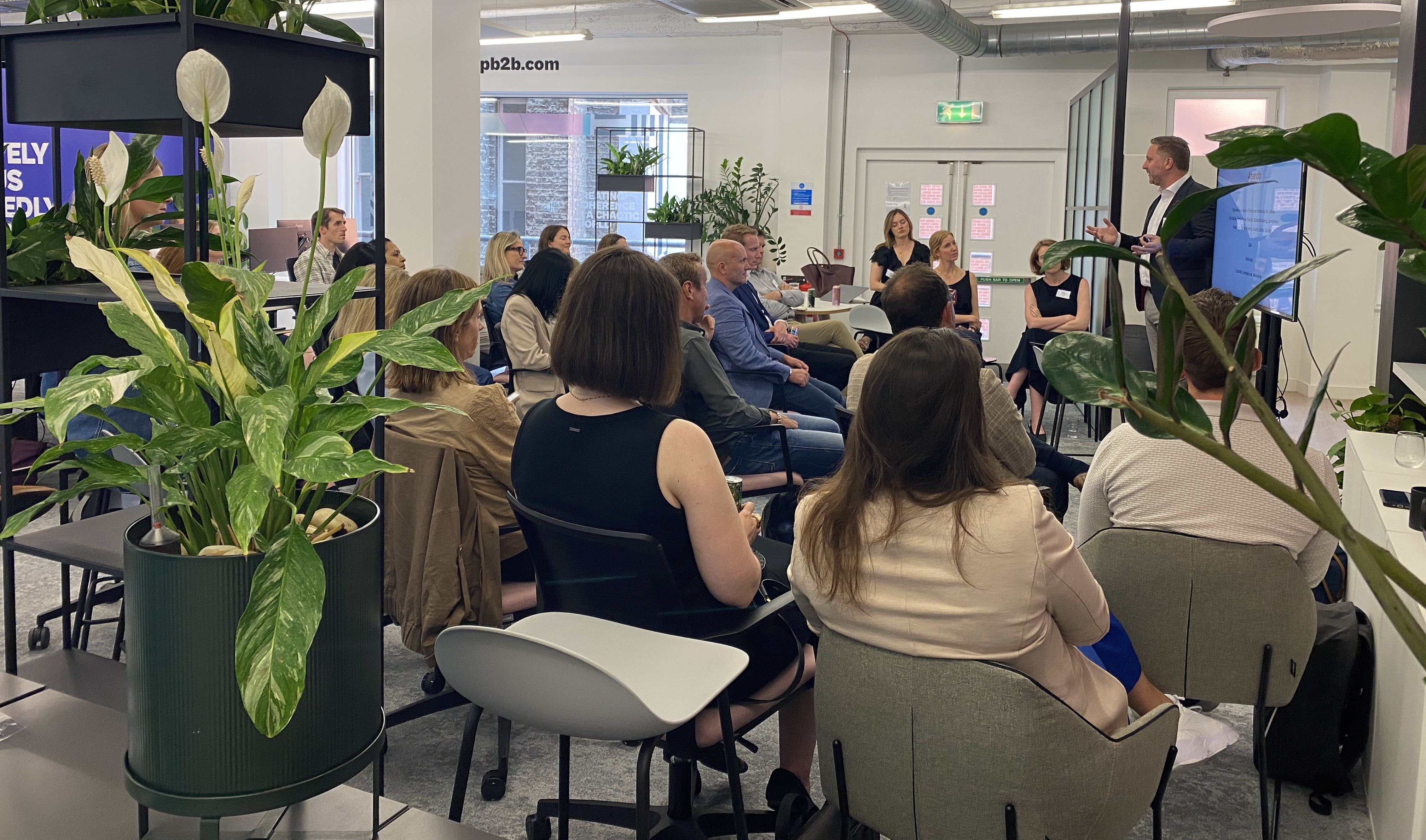We recently participated in the 2021 Demand Gen Report’s Strategy & Planning series of webinars. Our session was entitled Ravenous Demand – Feeding Your ABM & Demand Programmes With The Audience Insights They Need To Thrive.
Developing that presentation helped us hone our point of view on the theme of audience insights, and in this two-part blog I am going to share the key points we addressed.
While not part of the original presentation – largely due to time constraints – I am going to start with an overview of what insights are and how they are developed. In the second instalment, we’ll investigate why audience insights remain our biggest challenge and share some ideas on how to develop them.
Just what are insights?
Perhaps the best way to understand insights is to contrast them with the data and information we are so familiar with.
Data are the raw materials from which both information and insights are built. Data consists of a set of facts or numeric values that are either observed (qualitative) or measured (quantitative). The two ‘q words’ have an academic ring but are vital distinctions. As we will see, observations play a key role in the development of insights.
Data is turned into information by adding context, meaning and purpose. As an example, retailers process specific point-of-sale data related to a purchase to provide a receipt which has both meaning and purpose to the purchaser.
Insights are meaningful observations based on a deeper view of the supporting information and data. That deeper view is often achieved by immersion in information or data. The way insights are produced has some similarity to how an idea emerges in an ‘aha moment’.
Actionable insights are those with a high level of relevance to your objectives and concrete enough for you to do something about them. In other words, you have both the desire and ability to turn the insight into an action.
Actionable insights – an example
An example of an actionable insight comes from the world of mergers and acquisitions, which I witnessed a couple of years ago. It was revealed to marketing by a product leader who had joined the company from an organisation that regularly acquired other companies.
The insight was that there is a substantial difference between the needs of those companies that continuously acquire companies as part of their growth strategies, and those that rarely acquire or have not acquired recently.
The companies we labelled ‘serial acquirers’ typically have well-developed technical integration processes and experienced operational teams. Their needs reflect that and are very different to ‘new acquirers’, those companies that had not acquired before or recently. These companies lack that experience and so their requirements are broader, including process and change management support, as well as technology.
This insight led to action: the creation of two distinct target segments which were marketed very differently.
The quest for insights
The first project I can recall where insights were the desired outcome was when I was working as a regional marketing leader, perhaps 15 years ago. The general manager of EMEA was seeking answers to a tough set of questions that applied to the sales cycle in the region.
This resulted in a project for the EMEA sales ops lead to collect and organise the data required and then spend a substantial period of time immersed in that data. He described his working environment as “a dark room with a wet blanket over my head”. The wet blanket, I gathered was to stop his brain overheating, and this may well have been warranted as his insights were both striking and valuable. What was most surprising to me and the rest of the regional management team is that most of us “lived in” Salesforce and regularly saw reports that contained much of the data that he used for the project. Yet he saw so much deeper than we did. My conclusion at the time was that those insights were the product of skill and deep immersion.
Latterly producing insights has become much more of a regular part of business as usual. When I was CMO at software provider Quadrotech (now part of Quest) a couple of years ago, the ops team regularly developed insights. But by now, ops was a multidisciplinary team combining data science, process, martech operations, and other digital skills. Part of the team’s remit was to make sense of the data we worked with day to day, and working groups would form to delve into particular data sets before reporting back with insights, some of which were actionable and so all the more valuable.
Ops wasn’t the only source of insights in that company, however. One of the richest sources was a series of cross-functional workshops designed to help us gain a deeper understanding of the buying process. The workshops included representatives from the product organisation, sales and marketing, and used a process designed to elicit the largest contribution possible from the team.
Breaking down the buyer’s journey into stages, we defined who would participate at each stage and listed the collective needs of the team. Our goal was to establish a flow of insights and capture the most important aspects of how the purchasing process worked and what the collective information needs of the buying team were.
With participants from sales, I thought we would only get one shot at the process with the full team due to time pressure. However, I was wrong and we worked through four lengthy workshops with the full team in place. It was fascinating to see that the picture that emerged was so much more complete than we had ever had before. It was clear that individuals who worked together – even in the same team – each had pieces of the picture, which had never been put together before. Later we would refine these observations by persona and combine with quantitative data, but the value of the insights from the collective team was impressive.
Producing audience insights
At The Marketing Practice we regularly develop audience insights for our clients. These are most often developed by combining and analysing multiple first- and third-party data sources. Sometimes that data is enriched with commissioned research.
Most of the data is engagement data – even intent signals are forms of engagement. Being able to analyse audience engagement by topic, sub-topic and content type, with the audience broken down by persona and/or seniority, is vital to delivering actionable insights for our clients.
In the second part of this blog I will get into more detail on the types of data used to produce insights. We will also review where audience insights sit in the long list of marketing challenges and address some key questions that are likely to come up on your quest for insights.





